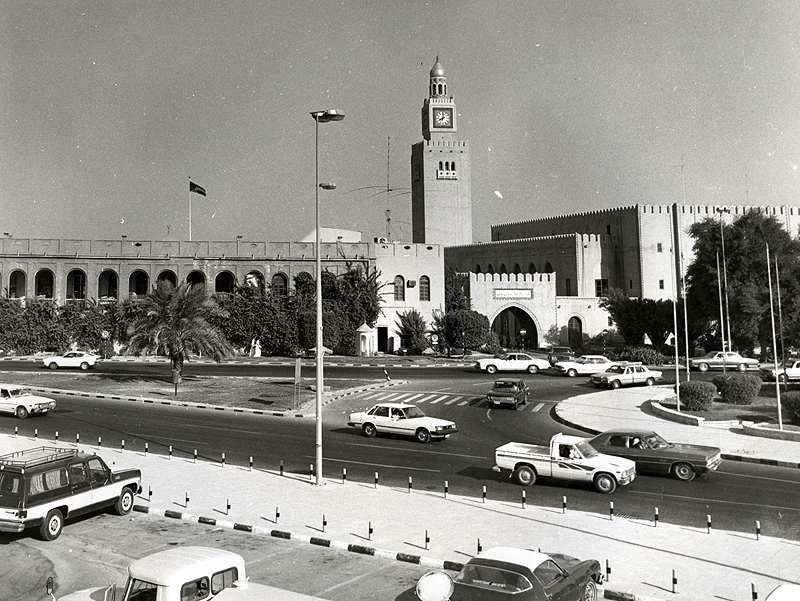Al-Seif Street was considered the most important and longest street in old Kuwait. It ran from Sharq to Qibla and included many famous landmarks and commercial and occupational centers that were the main backbone of the country's economy and a source of livelihood in the past. The street, which was six kilometers long and extended from the east of the old city to its west, had many important landmarks such as the Furdha vegetable market, and Naqaa on the beach, surrounded by rocks and used for docking ships and sometimes to repair them, apart from Al-Amayer - commercial shops.

Researcher in Kuwait history Mohammad Jamal in his book "Kuwait's Old Markets" says that among the most important landmarks of the street is Al-Seif Palace, which includes the governor's diwan which was built by Kuwait's late Amir Sheikh Mubarak Al-Sabah in 1906, and is located on the beach. He built another palace on the southern end as his residence, and they were linked with a wooden bridge.
Jamal added that in 1917, Kuwait's late ruler Sheikh Salem Al-Mubarak Al-Sabah refurbished the palace, which was built with "aajar" brought from Basra, and was built by craftsmen from Baghdad. A large yard was attached to the palace from the north end overlooking the sea, and had a pole with the Kuwait flag in the middle of it. He said on the east end of Al-Seif Palace overlooking the sea was "Niqaat Al-Shaheen" due to the presence of the building of late Shaheen Al-Ghanem, who built dhows, adding that the entire area used to be called Al-Shuyoukh Niqaa.
Jamal said Al-Seif Street used to include "Seif Al-Toub", an area that includes several Amayer, followed by Al-Kandaisa, which is a contraption to desalinate seawater to help compensate for a shortage in drinking water - the late Sheikh Mubarak Al-Sabah brought it in 1914. The iftar cannon was also in this area.
Jamal said to the east of Kandaisa there used to be the "Seif Maarafi" that included several Amayer that belonged to sheikhs, ship owners and merchants, the National Jaafari School and the Syrian clinic. Seif Maarafi in the east was followed by several Niqaat connected with each other and surrounded by a fence. On the extreme east there was Dasman Niqaa, considered the last Niqaa in Sharq that ended with the end of the wall.
On the southern end of old Seif street, Jamal said there was the "Rice of Ibn Umair", across from the entrance of the late Sheikh Mubarak's place from the south end, and was the place where rice was distributed free to the poor. He added when moving eastward from the Rice of Ibn Umar on Seif Street, there were the offices of the oil company, followed by Sayyed Hussein Baqer Al-Tabtabaei. To the east was the kiosk of Salman Al-Humoud Al-Sabah, then the eastern mustawsaf (polyclinic).
He said on the street itself was the Al-Saada School for orphans, Beit Dickson, which was the house of Colonel Dixon, the British commissioner accredited to Kuwait from 1929 until 1936, the Amiri hospital, the British consulate and Dasman Palace. Jamal said Qibla area starts from the west side of Dasman Palace with the customs building followed by the police station, then the vegetable market, a group of Amayer, Niqabas and cafes, and the diwan of late Ahmad Al-Ghanim. There was also the Al-Ahmadiya school, Al-Yusra, which is a long rocky coast and the American Hospital overlooking the sea in Al-Watiya area, which was an empty coastal area.
Jamal said Bahita hill was across Seif Street, and heading west was the office of Jamal Bashi that specialized in hauling goods from ships to the vegetable market. There were a number of shops and Amayer till the building of Al-Kharafi and Matrouk, which is considered as the first building built with bricks and concrete in Kuwait. It was followed by the road leading to the market and was named New Street, which is Abdullah Al-Salem Street now.

